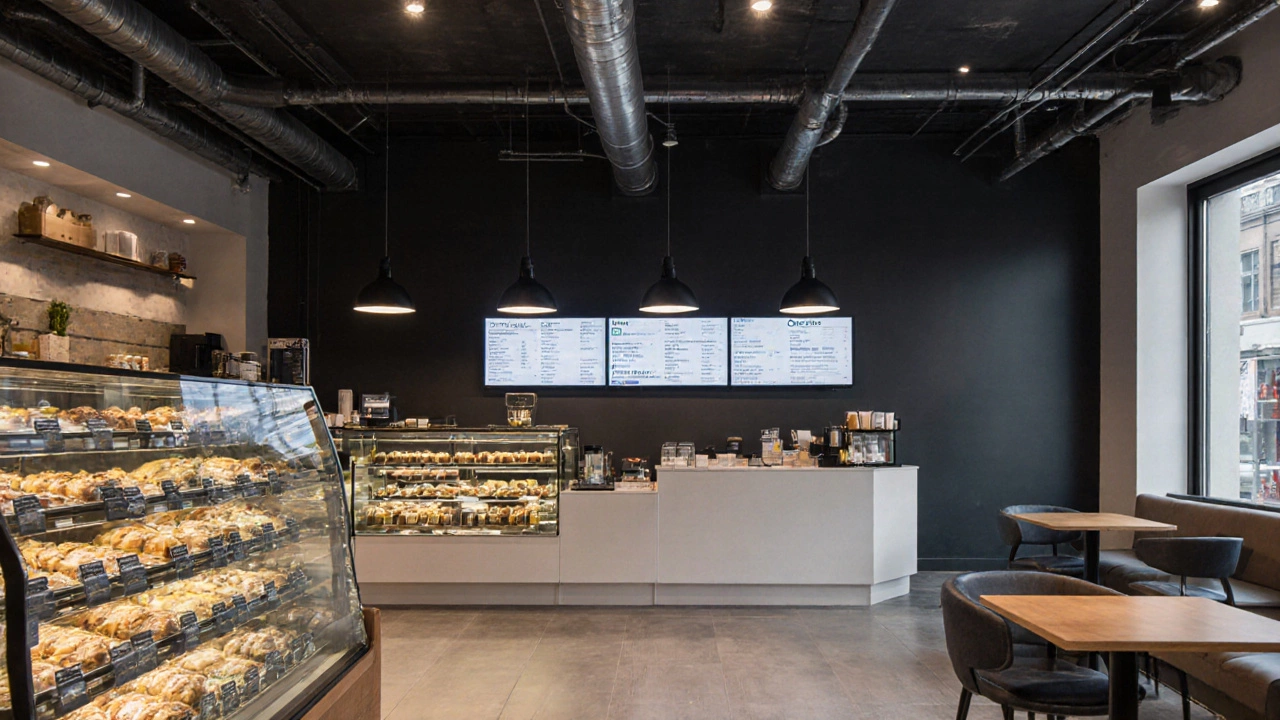
M&S transforms York flagship café into modern coffee shop, reopens Apr 11
Marks & Spencer’s York flagship café reopens as a modern M&S Coffee Shop on Apr 11, featuring a sleek look, faster service, and mixed customer reactions.
When talking about Business, the broad activities of buying, selling, and creating value in an economy. Also known as Commerce, it drives how companies adapt to customer needs and market pressures. Below you’ll see why this matters for the stories we share.
Retail, the direct sale of goods to end‑consumers through physical or online channels is a core pillar of Business. Retail demands sharp inventory control, smooth checkout experiences, and an eye on shifting shopper habits. For example, Marks & Spencer’s decision to revamp its York flagship café shows how a retailer can turn a single location into a brand‑experience hub. That move combines product placement, foot‑traffic analysis, and local market research—all typical retail tactics.
Food Service, the industry that prepares and sells prepared meals, drinks, and related services intersects with Retail when stores add cafés, bistros, or ready‑to‑eat sections. Food Service influences menu design, staffing levels, and health‑safety standards. In the case of the new M&S Coffee Shop, the shift to a modern layout aims to speed up service and attract a broader audience, illustrating how Food Service choices shape overall Business performance.
Coffee Shop, a specialized outlet focused on serving coffee, tea, and light snacks is a sub‑segment of both Retail and Food Service. A successful Coffee Shop needs the right blend of ambiance, product quality, and operational efficiency. The recent M&S redesign shows how a Coffee Shop can become a flagship experience that supports the parent retailer’s brand while meeting local consumer expectations.
These entities form clear semantic connections: Business encompasses Retail, Retail requires effective Food Service, and Food Service influences Coffee Shop design. Together they illustrate the chain of decisions that turn a simple café renovation into a strategic Business move.
Beyond the York example, Business news often highlights how other UK retailers are testing pop‑up stores, integrating digital ordering kiosks, or experimenting with sustainable packaging. Those trends all tie back to the same core concepts—understanding the customer journey, optimizing supply chains, and leveraging data for quicker decisions.
In practice, a Business leader watching these stories will notice three recurring patterns. First, brands are blurring the line between shopping and dining, turning stores into lifestyle destinations. Second, technology is streamlining service speed, from mobile ordering to contactless payments. Third, location‑specific redesigns—like the Parliament Street makeover—signal a shift toward hyper‑local marketing, where each outlet reflects its community’s tastes.
When you read the posts below, you’ll see how each piece ties back to these patterns. Some articles dive deep into the financial impact of a new coffee shop layout, while others explore customer sentiment after a redesign. All of them help paint a picture of how Business, Retail, Food Service, and Coffee Shop concepts interact in today’s market.
Looking ahead, expect more retailers to treat food areas as profit centres rather than add‑ons. Expect the rise of data‑driven menu tweaks and real‑time inventory alerts. And expect customers to keep demanding faster, fresher, and more personalized experiences. That’s the business reality driving every headline we cover.
Ready to see real examples of these ideas in action? Below you’ll find the latest stories that show how UK businesses are rethinking retail spaces, upgrading food service operations, and turning coffee shops into brand flagships. Dive in and see which strategies might work for your own projects.

Marks & Spencer’s York flagship café reopens as a modern M&S Coffee Shop on Apr 11, featuring a sleek look, faster service, and mixed customer reactions.